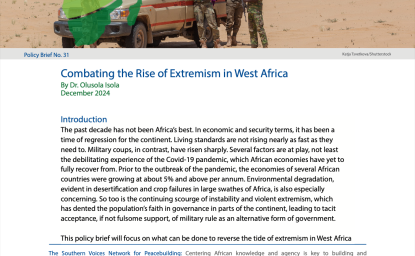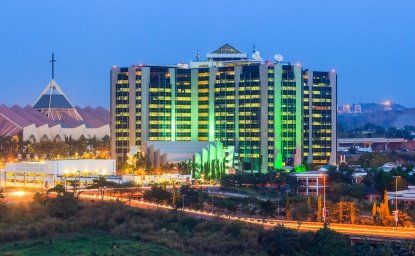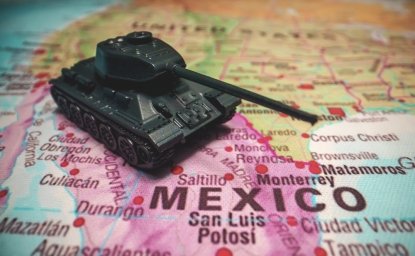Kennan Cable No. 38: Talking Up Terrorism in Central Asia

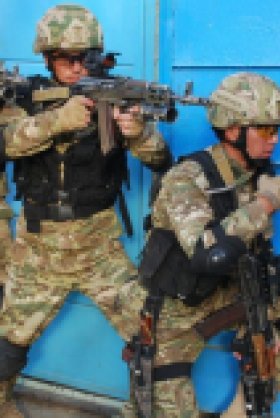
On July 29th, 2018 two American, one Dutch, and one Swiss cyclist were killed in southern Tajikistan. Two days later Amaq, the Islamic State’s media outlet, published a video of the attackers pledging allegiance to the group’s leader Abu Bakr al-Baghdadi and stating their aim to "establish the Almighty's rule on this land."[i] This was the first attack on Western tourists in the region in almost 20 years and the first attack within the region to be convincingly linked to ISIS.
Central Asians have also made headlines with a series of attacks outside of the region. In 2017, citizens from the region were involved in high-profile terrorist attacks in New York, Stockholm, Istanbul, and St. Petersburg. By 2017 Russian speakers were thought to be the largest group of foreign fighters in Syria and Iraq, outnumbering those from the rest of the Middle East.[ii] Some recruits have risen to positions of authority within foreign terrorist organizations. For example, after spectacularly defecting to the Islamic State in May 2015, Colonel Gulmurod Halimov, head of Tajikistan’s paramilitary police (OMON), became the Islamic State’s Minister of War.
As with previous incidents, these developments have led to renewed speculation from outlets like the Wall Street Journal and Business Insider that the region is becoming a “growing source of terrorism”[iii] and “fertile ground” for recruitment.[iv] However, despite the long-standing narrative that the region is becoming a hotspot of terrorism, the terrorist threat within Central Asia itself remains limited. In Central Asia only 19 attacks initiated by non-state actors and labelled terrorism by the governments have occurred since 2008, resulting in just 142 casualties. Just 0.005 percent of the region’s population has joined terrorist groups.
Certainly, the terrorist threat within Central Asia is “a reality that cannot be ignored,” as analysts Anna Matveeva and Antonio Guistozzi recently argued. [v] But we cannot ignore the way actors have manipulated the threat.[vi] Central Asian regimes are caught between the desire to use the threat to justify a crackdown on other opposition groups, as we have seen in Tajikistan, and to downplay the issue to demonstrate their control, such as in the case of Uzbekistan. In the past decade, government efforts to counter extremism and terrorism that have resulted in far more casualties than terrorism itself. Because the topic of terrorism is so politicized, it is important to recognize the limits of what we can actually know about the causes and extent of the transnational threat coming from Central Asia.[vii]
The Threat within Central Asia: Local Politics More than International Terrorism
Many Sovietologists viewed Central Asia as the USSR’s soft underbelly by virtue of its recalcitrant Muslim population. Writing after the 1979 invasion of Afghanistan, the doyen of Sovietological commentators on Central Asia, Alexandre Bennigsen, wrote that “the Muslim community is prepared for the inevitable showdown with its Russian rulers.”[viii] After independence from the Soviet Union, observers continued to frame the region as “potentially one of the most explosive” in the world and to consider ways to “calm” local tensions, especially the potential for religious extremism.[ix]
While none of the darkest predictions came to pass, during the first 15 years of Central Asian independence, the Islamic Movement of Uzbekistan (IMU) and its offshoot the Islamic Jihad Union (IJU) posed the most significant terrorist threat to the region.[x] Between 1999 and 2000, the IMU led armed incursions from its base in war-torn Tajikistan into Kyrgyzstan and Uzbekistan, taking hostages. After these failed, the IMU retreated to Afghanistan, where it suffered heavy losses in the 2001 U.S.-led invasion and relocated to Waziristan. The Uzbek government blamed the IMU for bombings in Tashkent in 1999 and the IJU claimed responsibility for attacks in Bukhara and Tashkent in 2004. By 2013, the IMU and IJU had an estimated 3,000 fighters.[xi] Over the border in Tajikistan, the only country in the region to experience civil war, the government battled with former commanders who did not accept the 1997 peace deal, in which the opposition agreed to lay down its arms in exchange for receiving 30 per cent of government posts, and led a series of attacks between 1997 and 2001. At least 145 individuals were killed as a result of this violence across the region.
Between 2008 and 2018, terrorists organized 19 deadly attacks Central Asia. This figure includes attacks that resulted in one or more deaths, including the terrorists themselves; were labelled terrorism by government officials; and were instigated by a terrorist group or individual rather than by state forces as part of a counter-terrorism operation. Since 2008, 138 individuals have died in terrorist attacks, the majority being representatives of law enforcement (78) and terrorist groups (49), with 11 civilian casualties. Half of these incidents have occurred in the region’s most prosperous state, Kazakhstan, with over half of deaths occurring in Tajikistan. To put these figures into perspective, during the same period 11,553 people were killed in traffic accidents in Kyrgyzstan alone.[xii]
Figure 1: Terrorist Attacks in Central Asia (2008–2018)
Date
Country
Location
Type
Deaths
19 April 2009
Tajikistan
Isfara
Murder of police officers
1
26 May 2009
Uzbekistan
Khanabad/Andijan
Armed attack/suicide bombing
2
3 September 2010
Tajikistan
Khujand
Suicide bombing
4
19 September 2010
Tajikistan
Kamarob
Armed attack
25
17 May 2011
Kazakhstan
Aktobe
Suicide bombing
1
23 May 2011
Kazakhstan
Astana
Bombing
1
1 July 2011
Kazakhstan
Aktobe
Armed attack
3
31 October 2011
Kazakhstan
Atyrau
Suicide bombing
1
8 November 2011
Kazakhstan
Almaty
Armed attack
1
12 November 2011
Kazakhstan
Taraz
Armed attack
7
21 July 2012
Tajikistan
Khorog
Assassination
1
30 July 2012
Kazakhstan
Almaty
Mass murder
14
23 May 2014
Tajikistan
Khorog
Armed attack
1
19 May 2015
Kyrgyzstan
Bishkek
Suicide bombing
1
4 September 2015
Tajikistan
Dushanbe/Vahdat
Armed attack
39
5 June 2016
Kazakhstan
Aktobe
Armed attack
21
18 July 2016
Kazakhstan
Almaty
Armed attack
10
30 August 2016
Kyrgyzstan
Bishkek
Suicide bombing
1
29 July 2018
Tajikistan
Danghara
Attack with car/knives
4
All of the incidents in Figure 1 meet the criteria of being deadly, initiated by a non-state group and labelled as terrorism by the government. Some are less obvious examples of terrorism. These include the 2012 assassination of the Chairman of the Directorate of Tajikistan’s State Committee for National Security in Badakhshan Province General Abdullo Nazarov in July 2012, which precipitated an armed conflict between the government and former opposition commanders in Khorog; and the murder of 12 people in the Ile-Alatau national park in Kazakhstan in August 2012, which the authorities blamed on an “extremist religious group.”[xiii] Across these cases, however, it is possible to make a number of observations.
Almost all of the attacks targeted law enforcement agencies: the security services, police, and army. Terrorism in Central Asia is related to the state in a number of ways. The pervasive state security services have helped keep the region stable; the governments of Kazakhstan, Kyrgyzstan, and Tajikistan claim to have foiled 61 plots in 2016. But state repression has also provoked a violent reaction from some members of the public. In Tajikistan, violent incidents in Khorog, the Rasht Valley, and Dushanbe were perpetrated by former state officials. As part of the peace accord that ended the country’s civil war, former opposition commanders were incorporated into the state and given positions that allowed them to generate rents from drug trafficking, patronage, and other activities.[xiv] But as the government of Emomali Rahmon established its position, it has relieved these commanders of their positions within the state in a process John Heathershaw and Parviz Mullojonov call “authoritarian conflict management.”[xv] For example, Deputy Defense Minister Abduhalim Nazarzoda, who led the armed attacks in Dushanbe and Vahdat in September 2015, reacted violently to the government’s attempt to remove him.[xvi] The terrorist incidents that have occurred in Tajikistan are better understood through these local dynamics of authoritarian consolidation than through the international terrorist narrative put forward by the government.[xvii]
State repression also seems to have provoked some of the violent incidents that have occurred beyond Tajikistan. Ruslan Kulikbayev, who shot three policemen and a civilian in Almaty in July 2016, was reportedly radicalized while serving a sentence for robbery. He claimed his attack was an “act of revenge” against law enforcement officials who had tortured him and his “brothers.”[xviii] Convicted criminal Rakhimjan Makhatov, who blew himself up in the headquarters of the Kazakhstani security services in Aktobe on May 17, 2011, was also reportedly acting in protest against the government’s restrictive religious laws and abuse of prisoners.[xix]
Attacks have taken place in the region’s cities, in Almaty, Bishkek, and Dushanbe. But the majority of terrorist attacks have occurred in areas that are distant from the center, like Aktobe in Kazakhstan or the Rasht Valley in Tajikistan. These isolated peripheral areas, like Kyrgyzstan’s Ferghana Valley or the oil-rich town of Zhanoezen, have also seen instances of ethnic violence and violently suppressed protests. These are areas that have not benefitted as much from economic development, and where grievances against local government are high.
While Central Asians have participated in transnational jihadist movements, most of the attacks that have occurred in the region since 2008 appear to have limited links to groups beyond the region. While the IMU and IJU were able to coordinate attacks from their bases outside of Uzbekistan up until 2004, the ability of external groups to stage attacks in the region appears to have diminished. Jund al-Khalifah, a Kazakh jihadist group based in Afghanistan which claimed responsibility for two attacks in Kazakhstan in 2011, has been met with skepticism by local experts, many of whom believe the organization was trying to capitalize on the attacks rather than direct them.[xx] A few external groups have managed to launch attacks in the region. The Kyrgyz security services blamed the Uyghur group, the East Turkestan Islamic Movement, for ordering an attack on the Chinese embassy in September 2016.[xxi] The young attackers in Tajikistan were inspired by ISIS to target tourists.
A greater danger lies with lone wolf attacks by radicalized individuals, like Almaty gunman Kulikbayev. In similar incident, Maksat Kariev killed seven people in a series of attacks across the city of Taraz in December 2011. Other attacks have been carried out by groups inspired by jihadist propaganda but without direct orders from a specific group. The convicted criminals who carried out the June 2016 Aktobe attack, in which 16 men robbed two gun shops and attacked an army base, were allegedly inspired by senior ISIS member Abu Mohammad al-Adnani’s call for jihad.[xxii] Like the attack in Aktobe, terrorist attacks in the region have mostly been sporadic, short-lived, and disorganized. Few of the attackers have made specific demands or stated their goals. And when they have, such as in the case of the recent attack in Tajikistan, these aims have been vague.
The Flow of Returning Ex-Fighters and Recruits to Afghanistan: A Trickle not a Surge
Since 2011, between 2,000 and 4,000 Central Asian citizens have migrated to Syria and Iraq to join militant groups there.[xxiii] But the decline of ISIS and Jabhat Fateh in Syria and Iraq raises questions of what will happen to the remaining Central Asian militants if these groups lose all of their territory.[xxiv]
Figure 2: Estimates of Central Asians Participating in Conflicts Abroad
Country
Upper Estimate
Lower Estimate
Tajikistan
1,899[xxv]
1,141[xxvi]
Kyrgyzstan
863[xxvii]
500[xxviii]
Uzbekistan
1,500[xxix]
200[xxx]
Kazakhstan
350[xxxi]
300[xxxii]
Turkmenistan
360[xxxiii]
360
Ex-fighters are faced with three options. They could migrate to another country, move to join a terrorist group in another conflict zone, or return home. While a number of analysts have pointed to the danger posed by militants returning to Central Asia, the evidence suggests that a mass return to Central Asia remains unlikely.[xxxiv] For many, this was a one-way journey to seek adventure, martyrdom, or a new life.[xxxv] Many fighters have migrated with their families, a further sign of the permanence of their migration. At least 800 of those who went to the Middle East have been killed.
The governments of Tajikistan and Kazakhstan have amended legislation to revoke the citizenship of those convicted of being members of terrorist organizations, giving the state the right to bar or deport them. Over 300 ex-fighters from Tajikistan, Kyrgyzstan, and Kazakhstan have returned, either to face prosecution or to be amnestied, as in the case of Tajikistan, which amended its criminal legislation in 2015 to that effect.[xxxvi] Sending radicalized citizens to fight in Syria and Iraq may actually benefit the regimes in the region, helping them to, as Józef Lang writes, “avoid the problem of Islamic terrorism, by transferring it outside of the region.”[xxxvii] Over 30 of those amnestied in Tajikistan have returned to the Middle East.[xxxviii] An undisclosed number of citizens are in prison in Syria and Iraq. This leaves between 1,000 and 3,000 militants from Central Asia in the Middle East.
Instead of returning home, the fighters are more likely to migrate to Europe as refugees or move on to another theater. Afghanistan, with its geographical proximity and linguistic affinities with Central Asia, appears to be a logical destination for ex-fighters and new recruits.[xxxix] Potential destinations for recruits include Al-Qaeda affiliated Jamaat Ansurallah,[xl] the Islamic Jihad Union,[xli] and the Islamic Movement of Uzbekistan,[xlii] which declared allegiance to the Islamic State in 2015. With these organizations weakened by years of war, it has been Islamic State of Khurasan Province (ISKP) that has been most active in trying to recruit ex-fighters and new recruits.[xliii] Like ISIS, the group has developed a sophisticated media presence outmatching the Taliban.[xliv] In March 2018, the group released a video in which Uzbek fighters called on militants in Syria and Iraq to join the group.[xlv] Having declared its existence as an affiliate of ISIS in January 2015, ISKP has extended its presence beyond its initial base in Nangarhar to establish bases in Badakhshan and Jowzjan in northern Afghanistan controlled by former IMU commander Moawiya, who broke with the Nangarhar branch in the summer of 2017.[xlvi]
The group’s actual strength remains hard to ascertain.[xlvii] Afghan officials have estimated that ISKP has 3,000 foreign fighters in its ranks.[xlviii] Many of these are militants from Pakistan and Uzbekistan who have fought in the region since the 1990s. Nonetheless, there is evidence that some Tajik citizens have joined the group more recently. Tajik president Emomali Rahmon claimed in May 2018 that dozens of citizens had joined ISKP.[xlix] Most cross into Afghanistan from Iran.[l] In an illustrative case, Shodidjon Boev worked as a migrant laborer in Russia before trying to travel to Syria via Turkey. Having failed to reach Syria, he travelled to Iran, crossing into Afghanistan in December 2017. A further nine cases of Tajiks entering Afghanistan via Iran have been reported in the media since mid-2017.
ISKP’s promises of expansion into Central Asia may be more appealing to recruits than the alternative nationalist vision of the Taliban, which has ruled out northern expansion. But at present this threat appears limited. Antonio Guistozzi, a leading expert on ISKP, concluded in late 2017 that the organization was damaged by in-fighting and setbacks in the Middle East, concluding that it “is past its peak in Afghanistan, if not in terms of military capabilities, certainly in terms of jihadist image.”[li] The flow of fighters to Afghanistan is insignificant when compared with the peak of ISIS recruiting from Central Asia in 2014–15.
Increasing Spillovers from Afghanistan
Central Asia shares a 2,387-kilometer river border with Afghanistan. Tajikistan and Turkmenistan are the most vulnerable to spillovers from Afghanistan with long, poorly defended borders. Most border incursions and violent incidents are related to the estimated $2 billion worth of opium and heroin being imported from Afghanistan, mostly through Tajikistan.[lii] But while the Taliban is involved in drug trafficking, it has a limited interest in de-stabilizing its northern neighbors, contrary to what many officials claim.[liii]
A more common occurrence has been sporadic spillovers from the fighting in northern Afghanistan. The number of armed incidents occurring in the eight Afghan provinces bordering Central Asia has increased in recent years, especially with the scaling back of NATO’s operations since 2014.
Figure 3: Violent Incidents on the Tajik-Afghan Border[liv]
Between 2011 and 2013, 38 armed incidents occurred on the Tajik-Afghan border. This figure doubled to 76 for the period between 2014 and 2016, with a further 29 incidents reported in 2017. [lv] Fighting between the Taliban and Afghan military has also reached the border with Turkmenistan. In two incidents in 2014, for example, six Turkmen border guards were killed by Taliban militants.[lvi] But these incidents remain relatively rare. With the promise of foreign security assistance and the lucrative flow of narcotics, as security specialist George Gavrilis concludes, “proximity to Afghanistan for the Central Asian republics is more windfall than threat.”[lvii]
Central Asia’s Salient Security Issue: Clumsy Counter-extremism
As terrorism expert Brian Jenkins has argued, predicting how the terrorist threat will evolve over the coming years is exceedingly difficult.[lviii] Previous events that analysts predicted could lead to an upsurge in terrorism, such as the NATO drawback from Afghanistan in 2014 and the death of long-serving Uzbek president Islam Karimov in August 2016, did not substantially elevate the threat. Events beyond the region, such as the Islamic State’s declaration of a “caliphate” in 2014 and the war in Afghanistan, have been more important in driving the levels of recruitment. The attack on cyclists in Tajikistan in August 2018 deviated from the patterns of attacks in Central Asia in targeting Western tourists. But, like the attacks in Kazakhstan in 2011 and 2016, the attackers used relatively unsophisticated methods and not a great deal of planning. Such incidents are difficult to prevent. Terrorist attacks by individuals and groups who have been inspired by extremist propaganda or have personal grievances against the local regime will likely continue to occur on a sporadic basis.
Terrorism remains a security challenge for Central Asia that needs to be approached critically and taken seriously by policy makers. But the more pertinent issue within the region is not so much the success of terrorist groups in recruiting 0.005 percent of the region’s population, but the effect that government counter-extremism efforts have had on the remaining 99.995 percent. The region’s governments have used the specter of terrorism to strengthen their grip on power, restrict civil liberties, and repress their people. Recent focus groups conducted by Radio Free Europe with Kyrgyz, Tajik, and Kazakh participants pointed to the ways corrupt local officials and repressive law enforcement are generating grievances that have fueled extremist recruitment.59 Clumsy counter-extremism is creating the very problem it claims to combat.
[i] “Tajikistan Blames Banned Party for Attack on Foreign Cyclists; IS Posts Video,” RFE/RL, 31 August 2018, https://www.rferl.org/a/tajik-government-blames-banned-islamist-party-for-deadly-attack-on-foreign-cyclists/29400539.html.
[ii] Richard Barrett, Beyond the Caliphate: Foreign Fighters and the Threat of Returnees (New York: The Soufan Center, October 2017), http://thesoufancenter.org/research/beyond-caliphate/.
[iii] Jessica Donati and Paul Sonne, “New York Attack Underlines Central Asia as Growing Source of Terrorism,” Wall Street Journal, 31 October 2017, https://www.wsj.com/articles/new-york-attack-underlines-central-asia-as-growing-source-of-terrorism-1509508624.
[iv] Michal Kranz, “Here's How the Region the New York Attacker Immigrated from Became Fertile Ground for Terrorism,” Business Insider, 1 November 2017, http://www.businessinsider.com/central-asia-fertile-ground-for-terrorism-sayfullo-saipov-2017-11.
[v] Antonio Guistozzi and Anna Matveeva, “The Central Asian Militants: Cannon Fodder of Global Jihadism or Revolutionary Vanguard?” Small Wars and Insurgencies 29, no. 2 (2018): 190.
[vi] On the manipulation of the threat, see John Heathershaw and David Montgomery, “Islam, Secularism and Danger: A Reconsideration of the Link Between Religiosity, Radicalism and Rebellion in Central Asia,” Religion, State and Society 44, no. 3 (2016): 192–218; Rustam Burnashev, “Why Islamists Are Not the Most Important Regional Security Challenge for Central Asian States” in ISAF’s Withdrawal from Afghanistan: Central Asian Perspectives on Regional Security, ed. Johan Norberg and Erika Holmquist (Stockholm: Ministry of Defence, 2014), 56–65.
[vii] See Teun Van de Voorde, ‘“Terrorism Studies”: A Critical Appraisal,” in Jihadi Terrorism and the Radicalisation Challenge: European and American Experiences, ed. Rik Coolsaet (Farnham, UK: Ashgate, 2011), 46. For a discussion of the limits of our knowledge in the context of Central Asia, see John Heathershaw and David Montgomery. “Who Says Syria’s Calling? Why It Is Sometimes Better to Admit That We Just Do Not Know,” CEDAR Network (website), 17 February 2015, http://www.cedarnetwork.org/2015/02/17/who-says-syrias-calling-why-it-is-sometimes-better-to-admit-that-we-just-do-not-know-by-john-heathershaw-and-david-w-montgomery/.
[viii] Alexandre Bennigsen and Marie Broxup, The Islamic Threat to the Soviet State (London: Croom Helm, 1983), 87.
[ix] Nancy Lubin and Barnett Rubin, Calming the Ferghana Valley: Development and Dialogue in the Heart of Central Asia (Washington, DC: The Century Foundation, 1999).
[x] The IMU emerged from Adolat, an Islamist political party founded in Uzbekistan’s Ferghana Valley in 1991 by Tohir Yuldashev and Juma Namangani. The Islamic Jihad Union (IJU) broke away from the IMU between 2002 and 2004 after a faction of IMU leaders, including the IJU’s founder Najmiddin Jalolov, disagreed with the group’s decision not to resume attacks in Uzbekistan.
[xi] Józef Lang, The Radical Islamic Militants of Central Asia (Warsaw: OSW, 2013).
[xii] Zarina Satybaldieva, “Number of Traffic Accidents on the Rise in Kyrgyzstan,” Times of Central Asia, 11 November 2017, https://www.timesca.com/index.php/news/18911-number-of-traffic-accidents-on-the-rise-in-kyrgyzstan.
[xiii] Peter Leonard, “Religious Radicals Sought for Kazakh Mass Murder,” Washington Examiner, 27 September 2012, https://www.washingtonexaminer.com/religious-radicals-sought-for-kazakh-mass-murder.
[xiv] See Lawrence Markowitz, State Erosion: Unlootable Resources and Unruly Elites in Central Asia (Ithaca, NY: Cornell University Press, 2013); Jesse Driscoll, Warlords and Coalition Politics in Post-Soviet States (Cambridge: Cambridge University Press, 2015).
[xv] John Heathershaw and Parviz Mullojonov, “Rebels Without a Cause? Authoritarian Conflict Management in Tajikistan, 2008–2015,” chapter 2 in Tajikistan on the Move: Statebuilding and Societal Transformations, ed. Marlene Laruelle (Lanham, MD: Lexington, 2018).
[xvi] Edward Lemon, “Violence Emerges from Within the State,” CACI-Analyst, 23 September 2015, https://cacianalyst.org/publications/analytical-articles/item/13279-violence-in-tajikistan-emerges-from-within-the-state.html.
[xvii] Edward Lemon, “Mediating the Conflict in the Rasht Valley, Tajikistan,” Central Asian Affairs 1 no. 2 (2014): 247–272.
[xviii] “В Казахстане любое нападение на представителей власти объявляют терактом. Кому это нужно?” [“In Kazakhstan, Any Attack on Government Officials is Declared a Terrorist Attack. Who Needs It?”] Fergana News, 1 November 2016, http://www.fergananews.com/articles/9144.
[xix] Zhulduz Baizakova and Roger McDermott, Reassessing the Barriers to Islamic Radicalization in Kazakhstan (Carlisle, PA: U.S. Army War College Press, June 2015).
[xx] Zhulduz Baizakova and Roger McDermott, Reassessing the Barriers to Islamic Radicalization in Kazakhstan (Carlisle, PA: U.S. Army War College Press, June 2015), 20–22; Rustam Burnashev, “Why Islamists are Not the Most Important Regional Security Challenge for Central Asian States,” in ISAF’s Withdrawal from Afghanistan: Central Asian Perspectives on Regional Security, ed. Johan Norberg and Erika Holmquist (Stockholm: Ministry of Defence, 2014), 58; “Криминальная и террористическая карта Казахстана: обзор казахских СМИ за неделю” [“Criminal and Terrorist Map of Kazakhstan: Review of the Media This Week”], Regnum, 24 April 2012, www.regnum.ru/news/1524082.html.
[xxi] Olga Dzyubenko, “Kyrgyzstan says Uighur Militant Groups Behind Attack on China's Embassy,” Reuters, 6 September 2016, https://www.reuters.com/article/us-kyrgyzstan-blast-china/kyrgyzstan-says-uighur-militant-groups-behind-attack-on-chinas-embassy-idUSKCN11C1DK.
[xxii] Erlan Karin, “Central Asia: Facing Radical Islam,” Russie.Nei.Visions 98 (February 2017): 22.
[xxiii] This figure includes women, children, and men who have taken on non-combatant roles.
[xxiv] Originally Al-Nusra Front, al-Qaeda’s affiliate in Syria, it was rebranded Jabhat Fateh in July 2016.
[xxv] ГКНБ Таджикистана уточнил количество граждан страны, примкнувших к «Исламскому государству»" [State Committee on Security Clarified the Number of Citizens who Joined Islamic State], Radio Ozodi, 17 November 2018, to: https://rus.ozodi.org/a/29606159.html.
[xxvi] Nadin Bahrom, “Tajik Families Fear for Children, Grandchildren Caught up in Middle East Wars,” Caravanserai, 26 September 2017, http://central.asia-news.com/en_GB/articles/cnmi_ca/features/2017/09/26/feature-01.
[xxvii] Anna Matveeva, “Radicalisation and Violent Extremism in Kyrgyzstan: On the Way to the Caliphate?” The RUSI Journal 163 (1): 30–46.
[xxviii] “Kyrgyzstan Apprehends ISIL Terrorist in Bishkek,” Fars News Agency, 23 July 2016, http://en.farsnews.com/newstext.aspx?nn=13950502000746.
[xxix] “1,300 Tajik Nationals Fight Alongside IS Militants in Syria and Iraq, says the Soufan Center Report,” Asia Plus, 27 October 2017, http://www.asiaplustj.info/en/news/tajikistan/security/20171027/1300-tajik-nationals-fight-alongside-is-militants-in-syria-and-iraq-says-the-soufan-center-report.
[xxx] “В рядах ИГИЛ воюют около 200 граждан Узбекистана” [“In the Ranks of ISIS, 200 Uzbeks Fight”], Regnum, 26 March 2015, https://regnum.ru/%20news/1908975.html.
[xxxi] Richard Barrett, Beyond the Caliphate: Foreign Fighters and the Threat of Returnees (New York: The Soufan Center, October 2017), http://thesoufancenter.org/research/beyond-caliphate/.
[xxxii] Dinara Urazova, “300 Kazakhstanis Joined Islamic State, Half of Them—Women,” Tengri News, 20 November 2014, https://en.tengrinews.kz/military/300-Kazakhstanis-joined-Islamic-State-half-of-them-women-257571/.
[xxxiii] Foreign Fighters: An Updated Assessment of the Flow of Foreign Fighters into Syria and Iraq (New York: The Soufan Group, December 2015), http://soufangroup.com/wp-content/uploads/2015/12/TSG_ForeignFightersUpdate3.pdf.
[xxxiv] Syria Calling: Radicalisation in Central Asia (Brussels: International Crisis Group, January 2015).
[xxxv] Thomas F. Lynch III, Michael Bouffard, Kelsey King, and Graham Vickowski, The Return of Foreign Fighters to Central Asia: Implications for U.S. Counterterrorism Policy (Washington, DC: National Defense University Press, 2016), 21.
[xxxvi] Farangis Najibullah, “Life After Islamic State: Pardoned Tajik Militants Navigate Road to Reintegration,” RFE/RL, 6 August 2017, https://www.rferl.org/a/tajikistan-islamic-state-pardoned-militants-reintegration/28661770.html.
[xxxvii] Józef Lang, “Exporting Jihad – Islamic Terrorism from Central Asia,” OSW Commentary 236 (2017): 1–7.
[xxxviii] “More Than 30 Pardoned Tajiks Have Rejoined IS Terror Group, said Sughd Chief Police Officer,” Asia Plus, 5 February 2018, http://news.tj/en/news/tajikistan/security/20180205/more-than-30-pardoned-tajiks-have-rejoined-is-terror-group-said-sughd-chief-police-officer.
[xxxix] Edward Lemon, “To Afghanistan Not Syria? Islamic State Diverts Tajik Fighters South,” Eurasia Daily Monitor, 15 March 2017, https://jamestown.org/program/afghanistan-not-syria-islamic-state-diverts-tajik-fighters-south/.
[xl]Jamaat Ansarullah was formed in 2010 by former opposition commander Amriddin Tabarov. Following Tabarov’s death in 2015, his son-in-law Mavlavi Salmon took over. Jamaat Ansarullah claimed responsibility for the 2010 suicide bombing targeting employees at the Ministry of Internal Affairs building in Khujand, Tajikistan. Its current strength is estimated to be around 100 fighters. See “Tajik Jamaat Ansarullah Terrorists Step up Activity in Afghanistan,” Caravanserai, 5 August 2016, http://central.asia-news.com/en_GB/articles/cnmi_ca/features/2016/08/05/feature-02.
[xli] Obaid Ali, “New Confusion About ISKP: A Case Study from Sar-e Pul,” Afghan Analysts Network, 7 September 2018, https://www.afghanistan-analysts.org/new-confusion-about-iskp-a-case-study-from-sar-e-pul/.
[xlii] The IMU emerged from Adolat, an Islamist political party founded in Uzbekistan’s Ferghana Valley in 1991 by Tohir Yuldashev and Juma Namangani. The organization launched a series of raids into Kyrgyzstan in 1999 and 2000 from its base in Tajikistan. Having moved to Afghanistan, the IMU sustained heavy losses following the NATO invasion in 2001.
[xliii] Khurasan is a Persian word referring to the territory of modern-day Afghanistan and parts of Central Asia. In its early stage ISKP was largely made up of Pakistani militants from Tehreek-e-Taliban Pakistan (TTP) who had been forced across the border by two Pakistani military offensives.
[xliv] Borhan Osman, “ISKP’s Battle for Minds: What are its Main Messages and Who Do They Attract?” Afghanistan Analysts Network, 12 December 2016, https://www.afghanistan-analysts.org/iskps-battle-for-minds-what-are-their-main-messages-and-who-do-they-attract/.
[xlv] Obaid Ali, “Still Under the IS’s Black Flag: Qari Hekmat’s ISKP Island in Jawzjan after His Death by Drone,” Afghanistan Analysts Network, 15 May 2018, https://www.afghanistan-analysts.org/still-under-the-iss-black-flag-qari-hekmats-iskp-island-in-jawzjan-after-his-death-by-drone/.
[xlvi] Antonio Giustozzi, “Taliban and Islamic State: Enemies or Brothers in Jihad?” Center for Research and Policy Analysis, 14 December 2017, https://www.crpaweb.org/single-post/2017/12/15/Enemies-or-Jihad-Brothers-Relations-Between-Taliban-and-Islamic-State.
[xlvii] Ekaterina Stepanova, “The ISIS Factor in Afghanistan: How Much of A Challenge for Russia?” Bishkek Project, 30 March 2017, https://bishkekproject.com/memos/21.
[xlviii] Jeff Seldin, “Afghan Officials: Islamic State Fighters Finding Sanctuary in Afghanistan,” VOA News, 18 November 2017, https://www.voanews.com/a/afghan-officials-islamic-state-finds-sanctuary-in-afghanistan/4122270.html.
[xlix] “Эмомали Рахмон: таджикские боевики переместились с Ближнего Востока в Афганистан” [“Emomali Rahmon: Tajik Militants are Moving from the Middle East to Afghanistan”], Radio Ozodi, 12 May 2018, https://rus.ozodi.org/a/29222903.html.
[l] “Кабул экстрадировал гражданку Таджикистана с двумя малолетними детьми” [“Kabul Extradited a Tajik Woman with Two Children”], Radio Ozodi, 6 May 2018, https://rus.ozodi.org/a/29210981.html.
[li] Antonio Giustozzi, “Taliban and Islamic State: Enemies or Brothers in Jihad?” Center for Research and Policy Analysis, 14 December 2017, https://www.crpaweb.org/single-post/2017/12/15/Enemies-or-Jihad-Brothers-Relations-Between-Taliban-and-Islamic-State.
[lii] U.S. Department of State, 2014 International Narcotics Control Strategy Report (INCSR), “Country Report: Tajikistan,” http://www.state.gov/j/inl/rls/nrcrpt/2014/vol1/index.htm.
[liii] See official viewpoints in interviews conducted in Nargis Kassenova, Relations Between Afghanistan and Central Asian States after 2014: Incentives, Constraints and Prospects (Stockholm: SIPRI, May 2014).
[liv] All data from the Main Directorate of Border Guards under the State Committee for National Security of Tajikistan.
[lv] These figures are based on official statements by the Tajik Border Troops.
[lvi] “Three Turkmen Border Guards Killed on Northern Afghan Border,” RFE/RL, 27 May 2014, https://www.rferl.org/a/three-turkmen-border-guards-killed-on-northern-afghan-border/25400305.html.
[lvii] George Gavrilis, Central Asia’s Border Woes & the Impact of International Assistance (New York: Open Society Foundations, May 2012), p.37.
[lviii] Brian Michael Jenkins, “Can We Predict Where Terrorists Will Strike Next?” RAND (blog), 19 June 2017, https://www.rand.org/blog/2017/06/can-we-predict-where-terrorists-will-strike-next.html.
Author

President, Oxus Society for Central Asian Affairs; Research Assistant Professor, The Bush School of Government and Public Service, Texas A&M University (Washington, D.C. Teaching Site)

Kennan Institute
After more than 50 years as a vital part of the Wilson Center legacy, the Kennan Institute has become an independent think tank. You can find the current website for the Kennan Institute at kennaninstitute.org. Please look for future announcements about partnership activities between the Wilson Center and the Kennan Institute at Wilson Center Press Room. The Kennan Institute is the premier US center for advanced research on Eurasia and the oldest and largest regional program at the Woodrow Wilson International Center for Scholars. The Kennan Institute is committed to improving American understanding of Russia, Ukraine, Central Asia, the South Caucasus, and the surrounding region through research and exchange. Read more

Explore More
Browse Insights & Analysis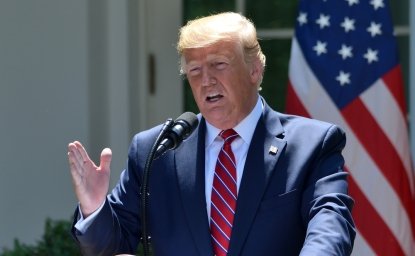
What Trump’s 2025 Inauguration Speech Says About US-Mexico Policy
